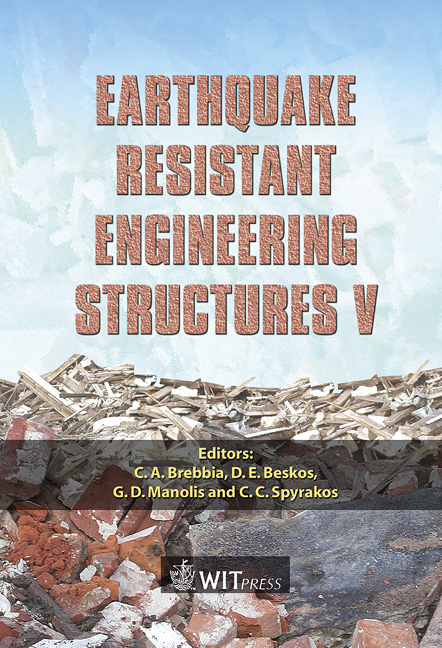Experiments On Seismic Retrofitting Of In-plane Loaded Masonry Walls With Fibre Composites
Price
Free (open access)
Transaction
Volume
81
Pages
10
Published
2005
Size
694 kb
Paper DOI
10.2495/ERES050561
Copyright
WIT Press
Author(s)
C. Wallner & L. Stempniewski
Abstract
Experimental investigations on the seismic retrofitting of in-plane loaded masonry by surface-applied fibre reinforced composites were performed. Preliminary small sample tests were carried out in order to test the mechanical suitability of various fibre composites under typical load states in shear stressed masonry. Afterwards suitable materials were tested on pre-damaged load-bearing walls. In all five full-scale tests earthquake loading was simulated by the pseudo-dynamic test method. Significant improvements of the wall’s structural behaviour with regard to loading capacity, fracture process and cyclic performance could be achieved by the applied retrofitting measures. Particularly the results of a new cementitious matrix which is free of epoxy-typical disadvantages were convincing. Keywords: unreinforced masonry, seismic retrofitting, fibre reinforced composites, cementitious matrix, pseudo-dynamic tests. 1 Introduction Unreinforced masonry (URM) constructions rank among the oldest buildings of mankind and are widespread throughout the world due to their various advantages like easy production, low-cost materials and excellent properties from the building physic’s point of view. But in seismic regions particularly load-bearing masonry walls are highly vulnerable because being originally designed mainly for gravity loads they are often not able to carry the horizontal forces arising during earthquakes. Not only low shear resistance but also defective workmanship or strong decay of material by exposure to climate conditions enhance the seismic vulnerability of masonry. As strong earthquakes
Keywords
unreinforced masonry, seismic retrofitting, fibre reinforced composites, cementitious matrix, pseudo-dynamic tests.





